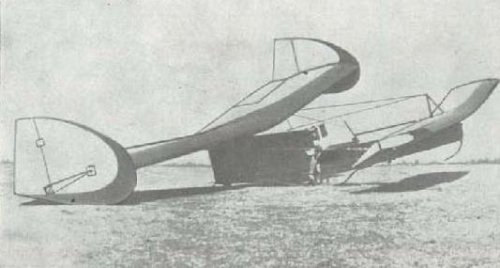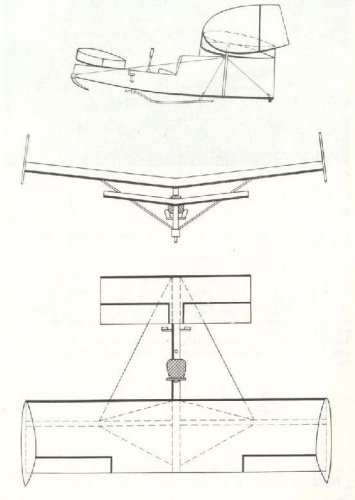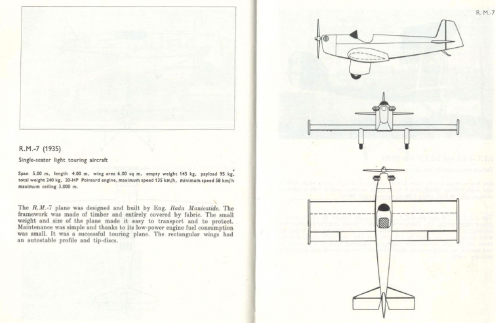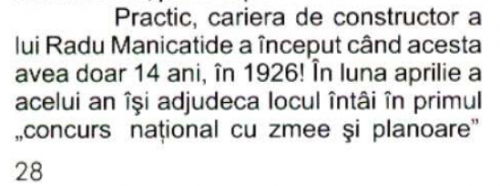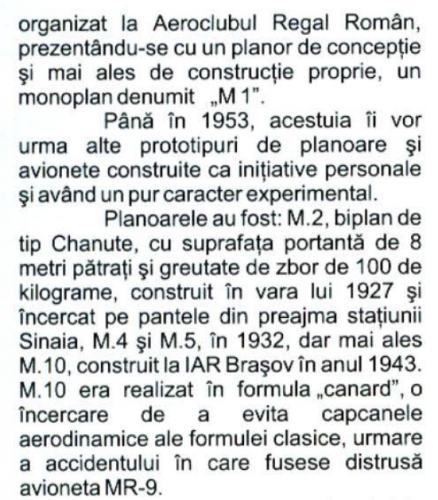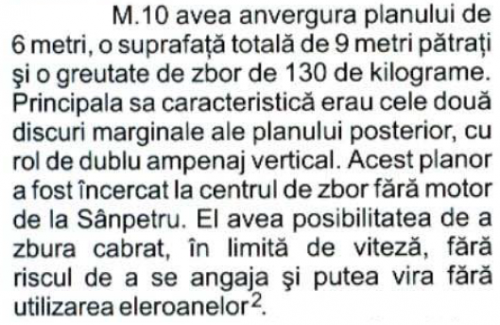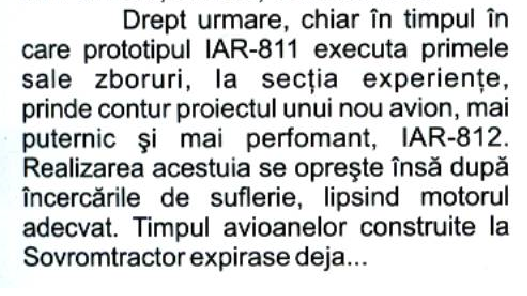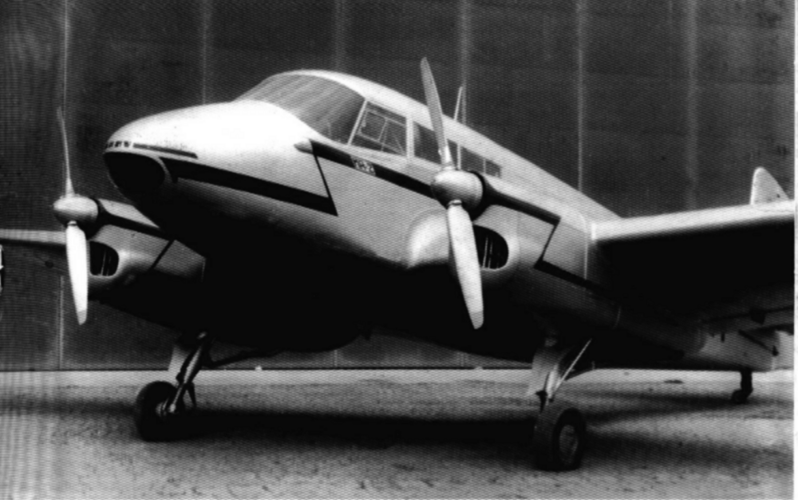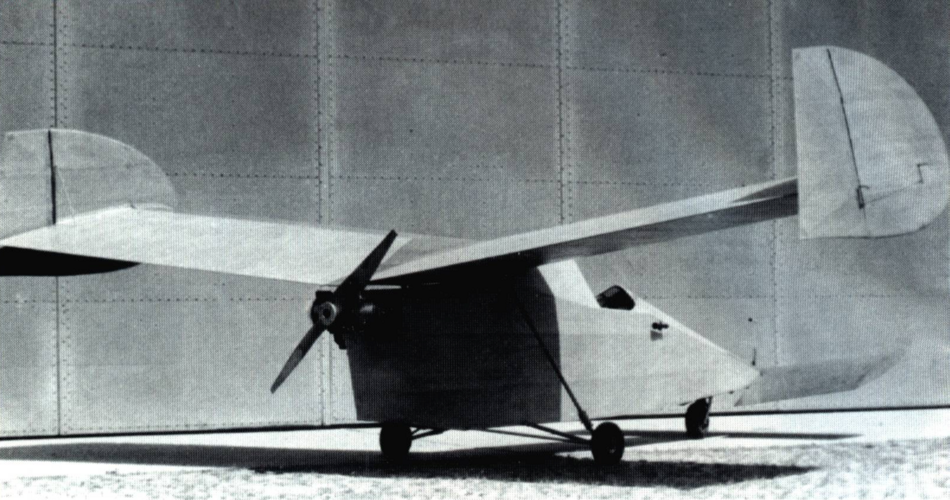Designations of Romanian Designs by Inginerul Radu Manicatide
The RM series of designations begins with homebuilt designs by an adolescent Manicatide. The series continues when employed at IAR-Brasov (where he contributed to the IAR-27, IAR-37, IAR-80, JRS-79, and Bf-109G). By the early '50s, IAR-800 series designations were applied to most Manicatide's designs (the delayed wartime RM-11/RM-12 being exceptions as well as the anomolous MR-2 light transport).
___________________________________________
Romanian RM (Radu Manicatide) Designations
Radu Manicatide worked as an engineer at the LARES repair shops (1935-1937), then at IAR Brasov (1937-1944). 'RM-' designations preceed and then overlap those periods.
RM-1 -- 1926 single-seat glider, aka M-1
RM-2 -- 1927 biplane glider, several flight tests flown
RM-3 -- Hypothetical designation for 1928 M-3 aircraft, 10-12 hp engine
RM-4 -- 1932 very light (250 kg) a/c, 12 hp Indian, max 85 km/h, 8m span
- RM-4: shoulder-winged wire-braced (cabane above) single-seater
-- NB: RM-4, designed in 1930-1932, proved too underpowered to fly
-- 3-view
https://aragornblog.files.wordpress.com/2012/08/rm4-schita.jpg
RM-5 -- 1935 very light (200 kg) a/c, 30 hp Anzani, max 120 km/h, 8m span
- RM-5: Single-seat parsol-winged RM-4 development, aka AS-1
--
https://aragornblog.files.wordpress.com/2012/08/rm-5.jpg
RM-6 -- [??]
RM-7 -- - 1935 [Project] single-seat, low-wing monoplane light tourer
- RM-7: 1 x 20 hp Poinsard HO-2,* span 5.0 m, empty weight 145 kg
-- * NB: René Poinsard's 1250 cc type B usually listed as 25 cv
-- Sources differ: RM-7 "designed and built" or an unbuilt project
RM-8 -- 193? [Project] Two-seat, low-wing monoplane light tourer
- R.M.8: 1 x 40 hp engine [?? type ??]*
-- * Poinsard 1550 cc type C listed as only 30-35 cv
RM-9 -- 1942 light (350 kg) a/c, 32 hp Praga, max 138 km/h, 7.5m span
- RM-9: strut-braced shoulder-winged monoplane, built at IAR-Brasov
--
https://aragornblog.files.wordpress.com/2012/08/rm-9.jpg
-- 3-view
https://aragornblog.files.wordpress.com/2012/08/rm-9-schita.jpg
RM-10 - 19?? canard glider (see Maveric's attachments in Reply #1)
--
https://aragornblog.wordpress.com/tag/radu-manicatide/
RM-11 - 1953 2-seat light (530 kg) canard, 60 hp Train 6T, 7.5m span
- RM-11: note: design finished 1942 or 1944 (sources differ)
-- 3-view
https://aragornblog.files.wordpress.com/2012/08/rm-11-schita.jpg
RM-12 - 1952 single-seat light (230 kg) canard, 20hp [?], 125 km/h, 6m span
- RM-12: scaled-down RM-11 design with open cockpit repl. RM-11's canopy
- RM-12: aka M-12, built at IAR Brasov
--
https://aragornblog.files.wordpress.com/2012/08/mr-2.jpg
MR - Radu Manicatide Designation Anomoly
For no apparent reason Radu Manicatide's intials were reversed for some designs (two are recorded below)
MR-2 - light transport (1 + 5 px), 2 x 160hp Walter
Minor 6-III, 14m span
- MR-2: series production version of IAR-814, 10 built (+ 2 IAR-814 prototype)
MR-6 -- [Project] 1930 twin-engined, 8-pax a/c, designed in Paris
--
http://oferte.carpatair.com/carpatairmagazine/cm20/files/search/searchtext.xml
Another designation anomoly is the 1930 D-20 tailless aircraft concept. The AS-1 pseudonym for the RM-5 may simply refer to its type or a role.
___________________________________________
IAR-800 Series Designations for designs by Ing Radu Manicatide
IAR-811 - 1949 2-seat cabin monoplane, 60hp Train 6T 6-cyl inline, 10m span
- IAR-811: design begun 1944, first post-War Romanian-produced aircraft
IAR-812 - [Project] IAR-811 development, more powerful engine
1950-1956: Manicatide designs built by URMV-3 (
Uzina de Reparatii Material Volant)
IAR-813 - 1950 2-seat sport/trainer, mixed const., 1 x 105hp Walter
Minor 4-III
- IAR-813: evolved from IAR-811, differed in engine and 'bubble canopy
IAR-814 - 1953 3-seat monoplane trainer/transport, 2 x 160hp Walter
Minor 6-III
- IAR-814: design begun 1951, mixed const., 14.0m span, 2 prototypes built
-- NB: Radu Manicatide-designed IAR-814 productionized as MR-2 (see above)
IAR-817 - 1955 light multi-purpose monoplane, 1 x 160hp Walter
Minor 6-III
- IAR-817: cantilever high-winged, pod/boom fuselage (for medevac, etc.)
1956 - Ing Manicatide to IAvB (
Intreprinderea de Avioane Bucuresti)
IAR-818 - 1956 light multi-purpose monoplane, 1 x 170hp Walter M-337 6-cyl
- IAR-818: 1960 IAR-817 dev., higher power engine, wing endplates
- IAR-818H: 1964 twin-float version of IAR-818, both types had 12.8m span
1967 - Ing Manicatide to IMFCA, Bucharest but a/c built by ICA Ghimbav
-- IMFCA =
Institutul de Mecanica Fluidelor si Cercetari Aerospatiale
IAR-821: 1966 single-seat agricultural aircraft, x 20 (1966-1969)
- IAR-821b: Two-seat tandem prototype (poss. IAR-821 conversion)
--
http://oferte.carpatair.com/carpatairmagazine/cm20/files/search/searchtext.xml
IAR-822 - 1971 low-wing cantilever monoplane agplane, 1 x 290hp Lycoming IO-540
- IAR-822: production started 1973,, re-engined/upgraded IAR-821, 20 built
- IAR-822B: 1973 tandem 2-seat trainer vers., limited production 1973-1974
- IAR-826: 1973 all-metal version of IAR-822, single-seat ag-plane,
IAR-823 - 1973 low-wing monoplane retr.-gear trainer, 1 x 290hp Lycoming IO-540
- IAR-823: military & flying club orders, 166 built 1974-83
IAR-826 - 1973 ag-plane, all-metal IAR-822 deriv., 13 built 1973-1974
IAR-827 - 1976 low-winged cantilever monoplane ag-plane, 1200 L tank, 14m span
- IAR-827: 1976 prototype (YR-MGA) 1 x 400hp Lycoming IO-720-DA1B flat-8
- IAR-827A: production vers., 1 x 600hp PZL-3S radial, in prod. until 1981
- IAR-827TP: 1981 680hp PT6A-15AG turboprop, 1 conv. (prototype YR-MGA)
____________________________________

